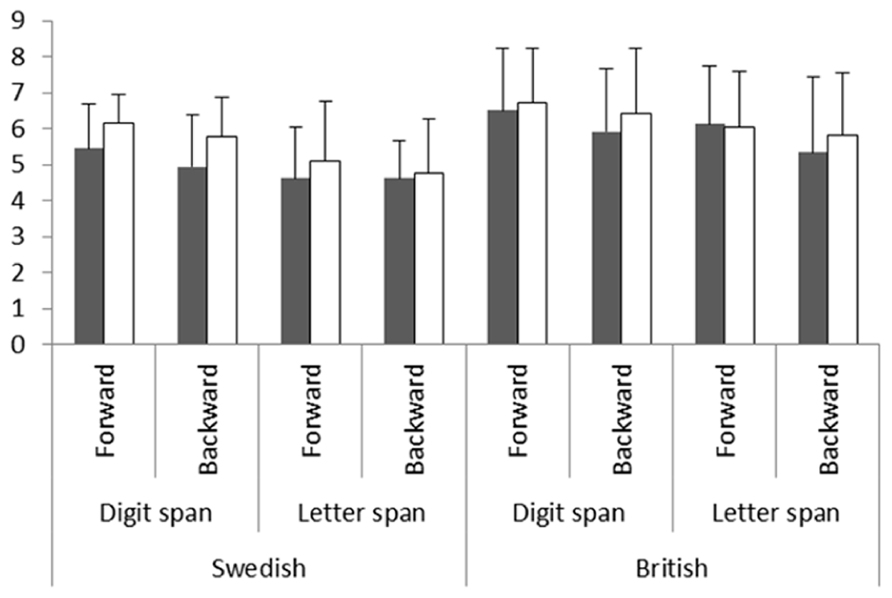

To understand how information processing differs in simple versus complex span, it would help to understand why these types of task yield such different spans. Put simply, simple span tasks are commonly considered typical tasks for measuring short-term memory (which is considered passive and dedicated to item memorization), while complex span tasks are usually considered typical measures of working memory (which is assumed to involve information processing beyond that needed for storage). As a result, research has suggested that simple span tasks and complex span tasks measure different processes ( Conway et al., 2002 Unsworth & Engle, 2006). One advantage for conducting complex span tasks is that they are predictive of intelligence ( Conway, Cowan, Bunting, Therriault, & Minkoff, 2002 Unsworth & Engle, 2007), which notably requires both memorizing and manipulating several pieces of information to solve a problem.īecause complex span tasks were designed to include an interleaved processing task, the average span is usually lower than the average 7 ± 2 items observed in simple short-term memory span tasks (simple span tasks for short), that is, around 4 ± 1 items ( Cowan, 2001). The dual nature of complex span tasks is central to Baddeley’s ( 2000) model, which distinguishes a storage component and a central attentional control system, but also to more recent models ( Barrouillet, Bernardin, & Camos, 2004 Engle, 2002). Complex span tasks interleave a memory task (requiring one to remember a set of items in the correct order) with a secondary processing task (e.g., judge the correctness of equations). Working memory (WM) capacity is often assessed with complex working memory span tasks (complex span tasks for short e.g., reading span, operation span see Conway et al., 2005). Working memory is information temporarily held in mind, which can be useful to complete a diverse range of cognitive tasks ( Baddeley & Hitch, 1974).

This result suggests that i) complex span tasks might overestimate storage capacity in general, and ii) the difference between simple and complex span performance levels must rest in some mechanism other than prevention of a chunking strategy by the interleaved processing task in complex span tasks. The prediction that chunking is important solely in simple spans was not confirmed: Effects of information compression contributed to performance levels to a similar extent in both tasks according to a theoretically-based metric. The three other conditions were predicted to prevent chunking processes, either because the interleaved processing task did not allow any chunking process to occur or because the noncompressible material inherently limited the chunkability of information. We predicted an interaction between the types of tasks and chunkability/compressibility, supporting a single higher span for the condition in which a simple span task was combined with chunkable items. To manipulate the chunkability of the stimulus lists, our method involved a measure of their compressibility, i.e., the extent to which a pattern exists that can be detected and used as a basis of chunk formation. It follows that the respective spans of these two types of tasks could be equal (at around 4 ± 1) if stimulus lists exclusively used nonchunkable stimulus items. One possible reason for the higher span of simple span tasks is that participants can take advantage of the spare time to chunk multiple items together to form fewer independent units, approximating 4 ± 1 chunks.

Consequently, the average span is usually lower (4 ± 1 items) than in simple span tasks (7 ± 2 items). Complex working memory span tasks were designed to engage multiple aspects of working memory and impose interleaved processing demands that limit the use of mnemonic strategies, such as chunking.


 0 kommentar(er)
0 kommentar(er)
